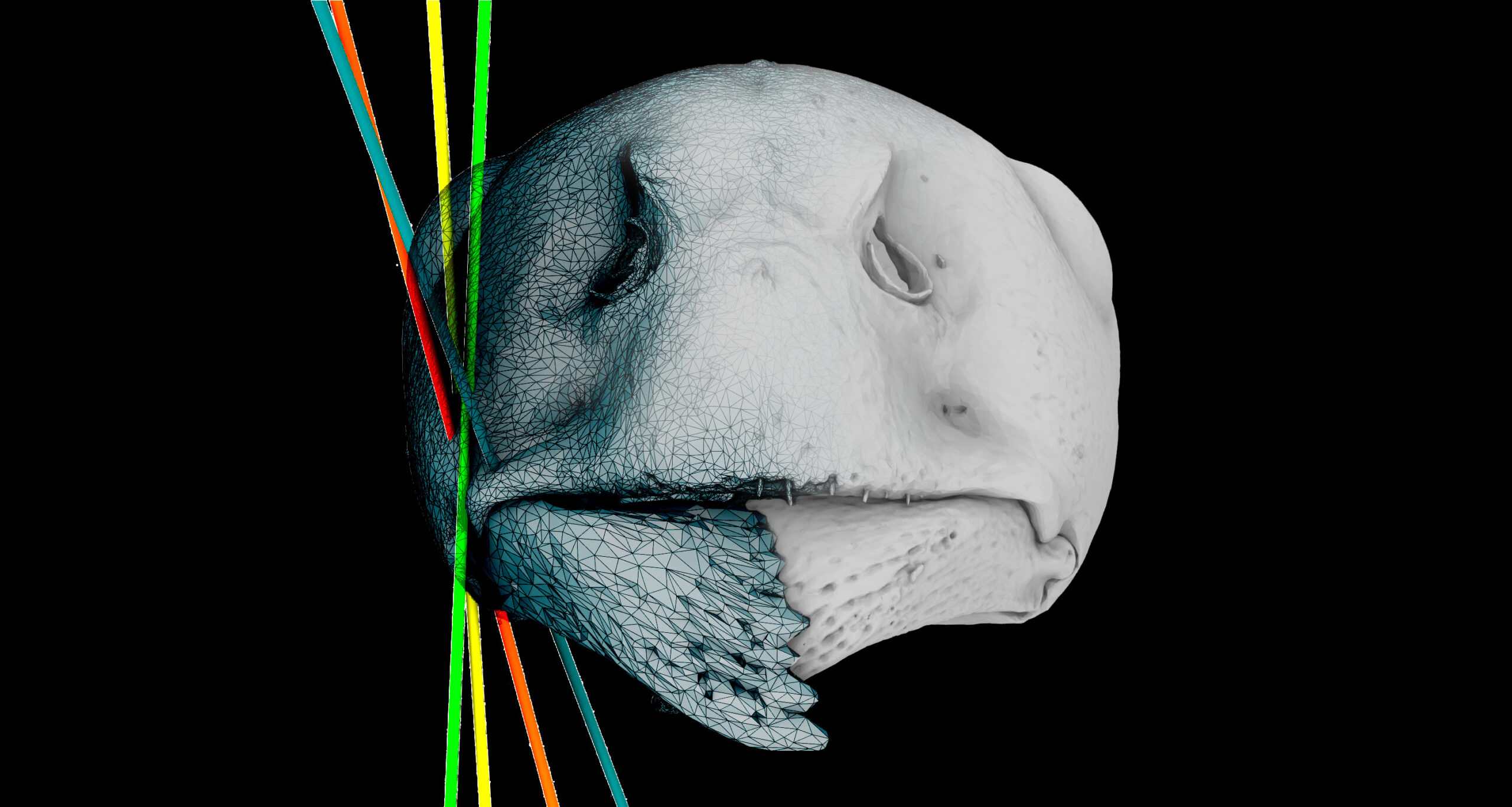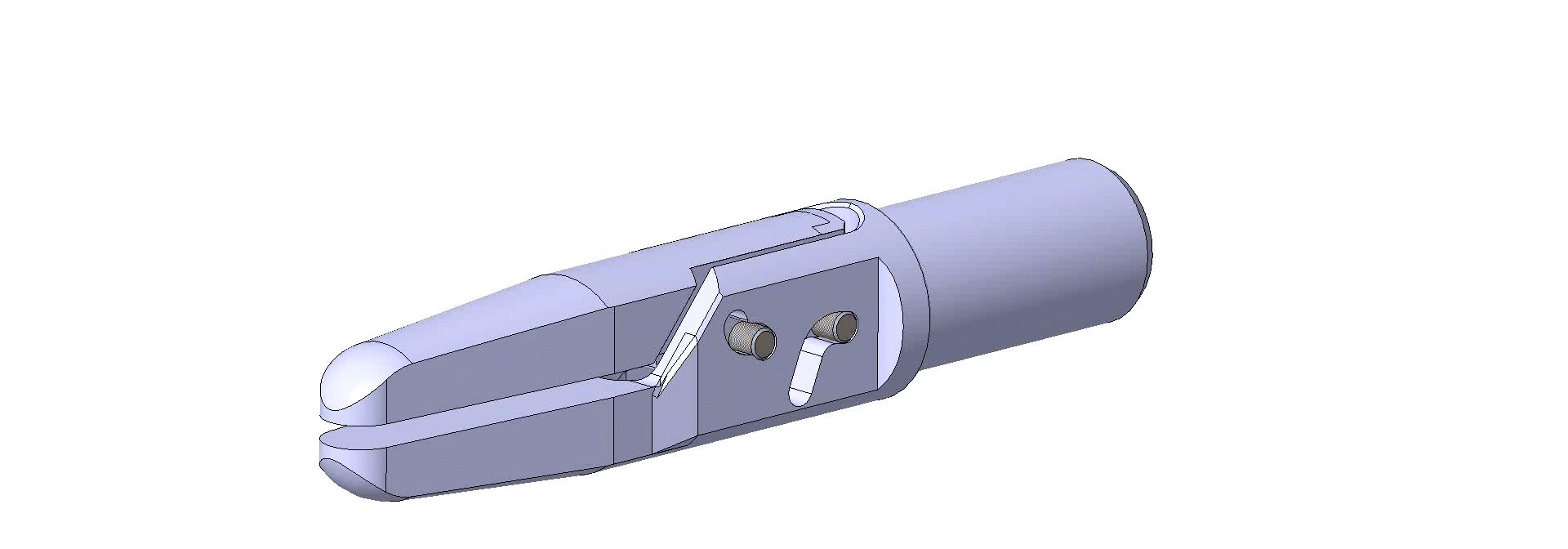What medicine can learn from ants…
 © LIB, B. Wipfler
© LIB, B. Wipfler
When biology and technology intersect, we usually refer to it as bionics. The mouthparts of ants, for example, could help improve needle holders used in endoscopic procedures. Dr Benjamin Wipfler, along with colleagues from various fields, recently published a study on this topic and explained in our interview what it is all about:
What makes the mouthparts of the Red Wood Ants special?
Ants, unlike all other winged insects, have jaws that allow movement in the joint. We can think of it like a door: the door leaf is connected to the frame by two joints, allowing it to move along a single path. When closing, it does not need to be stabilized; instead, all the force goes into the closing process. In ants, one of the door’s joints, metaphorically speaking, is partially dislocated, allowing for play. When trying to close the door, it becomes much more complicated and requires more force. I have to stabilize and guide the door leaf from several sides to ensure it arrives in the correct position in the frame. Quick slamming shut becomes impossible.
How do they gain an advantage in their habitats with these characteristics?
We do not know exactly why ants have done this. There are several hypotheses: in 2020, colleagues suggested that this play in the joint allows ants to carry their eggs with a gentler grip. Also advantageous are a wider jaw opening angle and improved force transmission from muscle to jaw.
Can you explain the three evolutionary design principles you derived from the ant’s mandibles?
In addition to the jaw principle of the “dislocated door”, two more could be derived: in insects, jaws primarily move sideways rather than up and down like in humans. However, the axis of the jaw is not parallel to the head axis like in humans, but tilted both horizontally and vertically. Therefore, the jaws do not open directly sideways but rather diagonally backward. We could imagine that the main chewing movement in humans would no longer be horizontal but rather a slanted, vertical movement from top-right to bottom-left. We also observe this axis shift in other insects.
Finally, the third principle is the transfer of force from muscle to jaw. This is the same functional principle as in a pair of scissors. The longer the handle and the shorter the cutting edge of a pair of scissors, the more force is transmitted. However, the movement becomes slower the more the force transmission is increased by changing these distances. In the insect’s jaw, the same principles apply: the greater the distance between muscle attachment and joint axis, the more force is transmitted. Predatory insects that hunt soft prey usually have smaller force transmission but allow for very rapid closing. Animals that have to chew very hard objects like seed pods tend to rely more on force. Due to the movement in the ant’s joint, the force transmission changes during the jaw closing process. Little force is transmitted in the wide-open state, while the value increases as the jaws close. This makes sense because most of the force is needed just before closing when chewing hard objects.
What advantages can be gained for medical endoscopy from this?
We have applied these three principles to an endoscopic needle holder. This is a rod-like device with small grippers at the tip, used to sew all incisions made in the body with needle and thread after surgery.

Every time the surgeon loses the needle while sewing or it slips, it must be gripped again, which is very difficult due to poor visibility and the very confined space, leading to complications. Therefore, a firm grip of the needle is very important. At the same time, the needle holder cannot become larger or wider and therefore more effective because it still has to fit through the small entry holes in the body. We were able to show that force transmission and thus the stability of the needle against movements increase when we apply the three examined functional principles of the ant’s jaw to such needle holders.
How exactly can these properties be transferred to medical devices and thus to operations?
We have designed three new models, each of which incorporates one of the three principles. The first model allows movements in the joint: the needle holder not only performs the classic closing movement of scissors but also is supplemented by an additional forward and backward movement. This jams the needle in the needle holder, providing additional stability.

The second model is based on the principle of the tilted axis of rotation: the opening movement no longer goes upwards but diagonally to the side. The arms of the needle holder act like door wedges that fix the needle.

The third design has an increased distance between the attachment of the force and the axis of rotation, resulting in a significant increase in force transmission. This was particularly tricky because we had to achieve this without widening the entire holder. In the end, we solved it by replacing the classic bolt that holds the two parts of scissors together with a rounded guide rail, on which one of the needle holder arms is guided in a circular motion. This projects the joint axis onto a virtual point outside the actual needle holder, allowing us to achieve the advantage of higher force transmission without widening the needle holder. We were able to show that these three newly developed models are about two to three times more effective than the commercial base model when it comes to preventing rotations and movements of the needle in the holder.

Which disciplines have contributed to the project and how have they collaborated?
Our most important resource was an extremely interdisciplinary team. It consisted of surgeons and physicians from the University Hospital Brandenburg, mechanical engineers from the University of Bayreuth, a functional morphologist from Greifswald, and myself as an evolutionary biologist. This extreme versatility in the team, with different thinking patterns and approaches, really helped us.
What is next?
Ant mandibles are a good model for grasping tools in confined spaces. In principle, even more effective models could be designed with the principles we have shown, or there is also the possibility to combine the three approaches. Of course, the new models need to be explicitly tested for their application. We would be happy if someone picks up our approaches and develops a finished product. The project has raised so many exciting new questions about insect mandibles and their movement and function that I will continue to work on them for quite a while.


